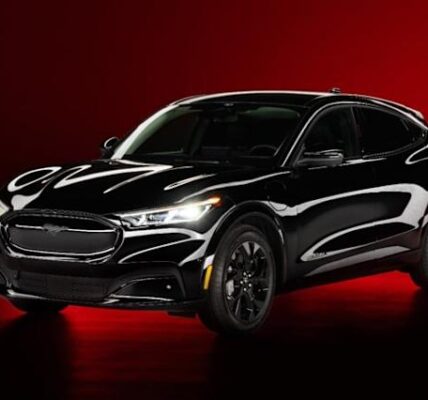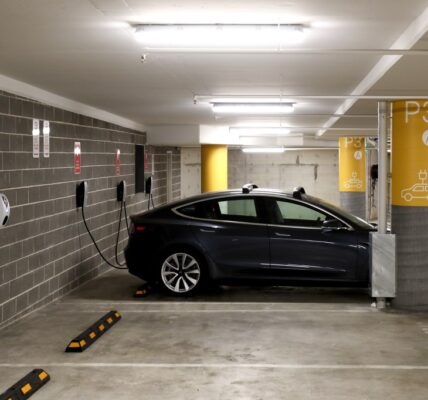Since taking the helm of Ford Motor Company (F -0.16%) in late 2020, CEO Jim Farley has been hyping the automaker’s electric-vehicle plans. In late 2021, Farley said Ford would be America’s No. 2 EV maker by the end of 2023, with plans to overtake market leader Tesla later in the decade.
Ford reached the No. 2 spot in the U.S. EV market in 2022, ahead of schedule, unseating General Motors (GM -0.79%). That seemed to verify Farley’s claims that Ford was the leader among non-Tesla EV makers. But the numbers didn’t tell the whole story. More recently, it has become clear, again, that GM has a sizable lead over Ford in the EV market.
The General bounces back
In 2022, Ford’s Mustang Mach-E was the best-selling non-Tesla EV in the U.S., with nearly 40,000 deliveries. GM’s Chevy Bolt family came just behind, with 38,120 deliveries.
However, GM reported negligible sales of its other EV models: the Cadillac LYRIQ and GMC HUMMER. By contrast, Ford delivered over 15,000 F-150 Lightning EVs and 6,500 E-Transit vans. That gave it over 60,000 domestic EV deliveries, more than 50% ahead of General Motors.
The script has flipped in 2023. GM has ramped up Bolt production again after addressing a major recall caused by fire risk. Meanwhile, Ford’s EV production has been constrained by recalls and factory upgrades. As a result, GM delivered 36,322 EVs in the U.S. in the first half of 2023, 41% ahead of Ford’s 25,709 deliveries. The Hyundai-Kia group beat GM for the No. 2 spot behind Tesla by just over 2,000 units.
GM’s EV business is ready for takeoff
Notably, the Bolt continued to dominate GM’s domestic EV sales in the first half of 2023. That will change over the next few quarters, though. General Motors is launching a slew of second-generation EVs built on its Ultium platform in the second half of 2023, led by the Chevy Silverado EV, Chevy Blazer EV, and Chevy Equinox EV.
To support these new vehicles, GM’s Ultium Cells JV is opening a second battery cell plant later this year, with a third facility on track to open in late 2024. These battery cell plants will enable the auto giant to grow its annual EV production in North America to around 1 million units by 2025. In the near term, GM plans to double EV production in the region every six months (from approximately 50,000 units in the first half of 2023 to 100,000 units in the second half of the year and 200,000 units in the first half of 2024).
GM is well positioned to hit these aggressive production targets. The Chevy Silverado EV will offer industry-leading range and has gotten rave reviews. Meanwhile, the Chevy Equinox EV will open up a whole new market segment with an expected starting price near $30,000.
GM’s prescient decision to design a new EV platform from the ground up has set the stage for this exponential growth. By building EVs on a common, optimized platform, the company reduced its development and manufacturing costs and enabled it to deliver better performance relative to price.
Ford pumps the brakes
Across town, Ford has tempered its near-term EV ambitions — and not just because of supply constraints. To be sure, the Blue Oval is charging ahead with big increases to production capacity for the Mustang Mach-E and F-150 Lightning. Ford also slashed F-150 Lightning prices last month, sparking a significant uptick in demand.
That said, Ford just postponed its target for reaching a 600,000 EV global run rate from late 2023 to sometime in 2024. And the company appears to be narrowing its focus to bigger, pricier EVs, acknowledging that it can’t make money building small and midsize crossovers, let alone sedans. Meanwhile, it is pushing conventional and plug-in hybrids as fuel-efficient alternatives to EVs.
Unlike GM, Ford’s second-generation EVs are still a solid two years away. Until then, Ford has to balance building its EV credibility by growing sales against keeping EV-related losses to a manageable level. Pricing pressure in the EV market has made that balancing act more difficult in 2023.
While Ford tries to walk this tightrope, General Motors is set to make huge EV market share gains beginning in late 2023 and accelerating in 2024. GM is still years away from challenging Tesla for EV industry dominance, but by 2025, it is likely to be the clear No. 2 player in the North American EV business, while Ford faces a fight just to secure third place.








